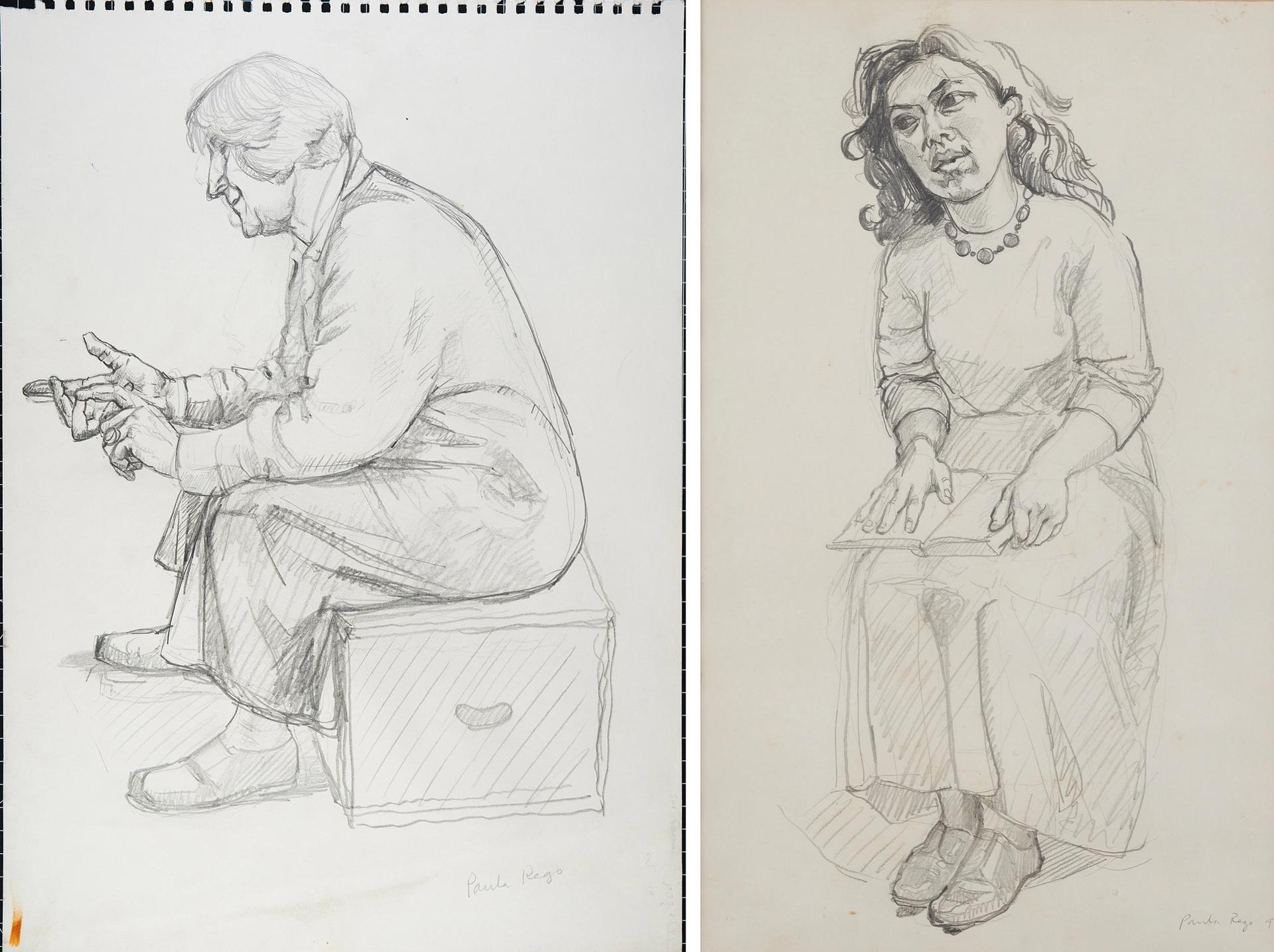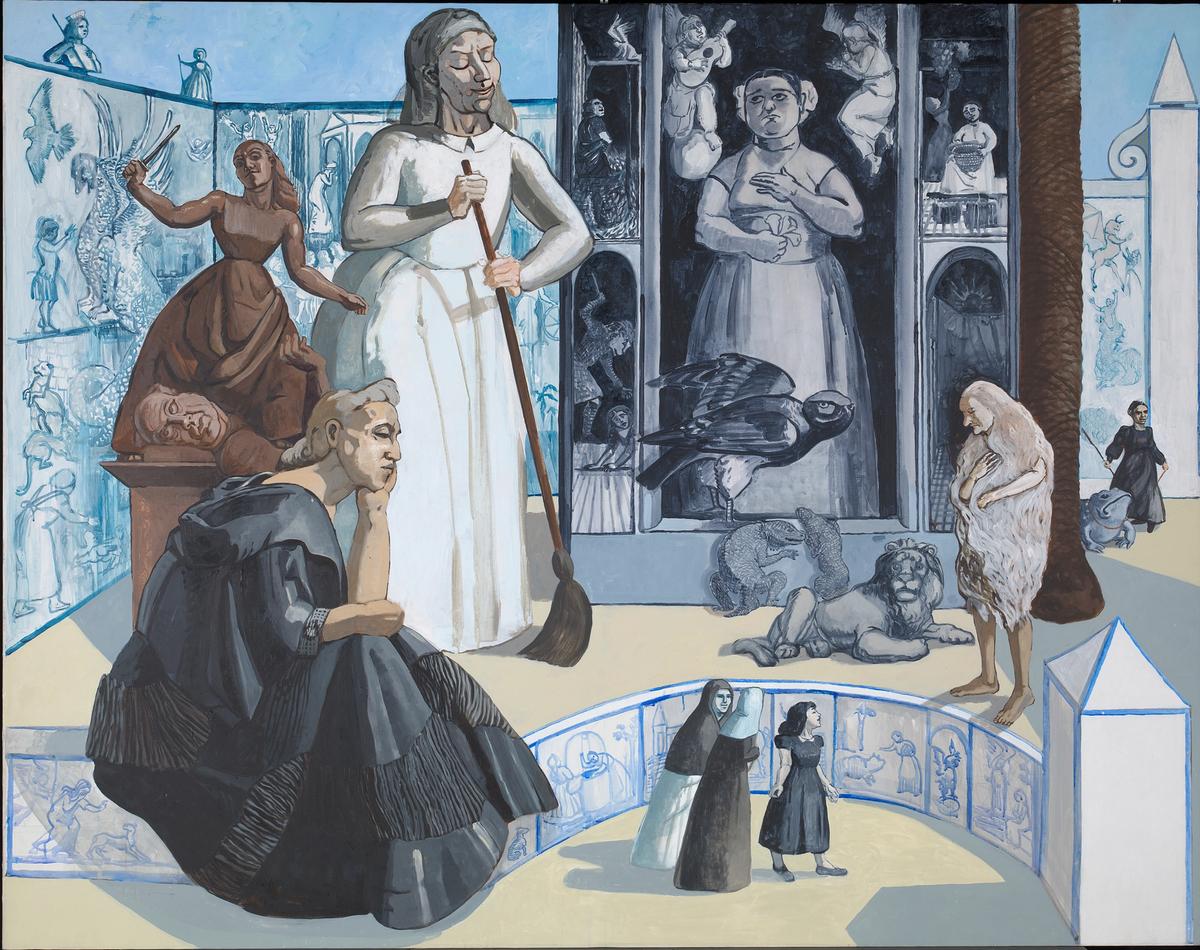A ten-metre long mural by the late artist Paula Rego due to go on show at London's National Gallery this summer (20 July-29 October) includes images of women based on staff working at the Trafalgar Square institution. Rego’s work, Crivelli’s Garden (1990-91), was inspired by La Madonna della Rondine (The Madonna of the Swallow, after 1490) by the Venetian artist Carlo Crivelli. The 15th-century altarpiece will also be displayed alongside Rego's mural exploring the relationship between the two works.
Rego made the monumental mural during her Associate Artist residency at the National Gallery from 1990 to 1992 when she created new works for the exhibition Tales of the National Gallery, which was presented in the Sunley Room (December 1991-March 1992). During the residency, Rego worked in the artist’s studio which was then in the basement of the gallery.

Paula Rego's Crivelli’s Garden (1990-1)
The National Gallery, London. Presented by English Estates, 1991
© Ostrich Arts Ltd. Photo: The National Gallery, London

Carlo Crivelli's Predella of La Madonna della Rondine (The Madonna of the Swallow, after 1490)
© The National Gallery, London
Gallery staff were asked by Rego to sit for the work, including Erika Langmuir and Ailsa Bhattacharya who worked in the education department at the time. “Casting is quite important because it’s part of my stimulus as a painter,” the artist said. Life studies of the gallery staff members who featured in the final painting are also included in the forthcoming show.
Priyesh Mistry, associate curator, Modern and contemporary projects at the National Gallery, says in a statement: “Paula Rego’s radical painting has consistently given women a voice over repression in a male-dominated society and art world. Her work remains as vital today as it was over 30 years ago when she first painted Crivelli’s Garden and continues to serve as an inspiration to new generations of artists and writers. This exhibition will be our opportunity at the National Gallery to celebrate her legacy and influence.”

Paula Rego's Study for Crivelli’s Garden (1990‑91)
Courtesy Ostrich Arts Ltd and Victoria Miro © Ostrich Arts Ltd
Paintings depicting biblical history and folklore scenes within the gallery's collection also served as inspiration for Rego as with the mural's portrayal of female figures within a Mediterranean garden. The artist also used the medieval Golden Legend, a written compilation of lives of the saints by the scholarly friar Jacobus de Voragine around 1260, as a source.
Rego challenged the dominance of the male gaze in Western art history, says a gallery statement, populating Crivelli’s Garden with women inspired by the Virgin Mary, Saint Cecilia, Mary Magdalene, Judith and Delilah.
Mistry tells The Art Newspaper that Crivelli’s Garden “remains as radical now as it was then," adding "Rego reacted as a woman to the gallery’s collection, giving visibility to the female saints and mythological women who had mostly been painted by men [and also] putting the women she admired, and that surrounded her in her life, into this dialogue with art history”.
He adds: "The [Rego] paintings were taken out of the [gallery] dining rooms before the renovations of the Sainsbury Wing began, so they are not currently on show. We lent the work to a retrospective of Rego’s work at the Kestner Gesellschaft in Hanover last year too. We are still working out plans for its future location in the gallery after the exhibition so that it can continue to be enjoyed by the public."


